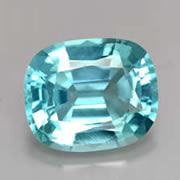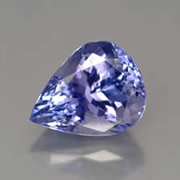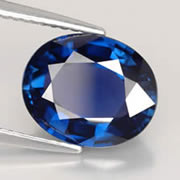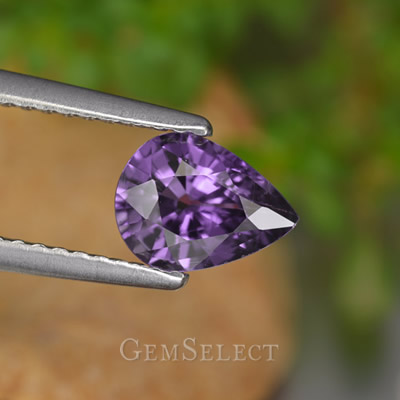Detecting Gem Treatments
Gemstones have been enhanced by a variety of methods for centuries. In fact the earliest writings on gem treatments can be found in Pliny the Elder's Natural History, written circa 77-79 AD.
Gemstone enhancements cover a whole range of techniques designed to improve the color and/or clarity of a gemstone. They range from simple heat treatment and oiling, to diffusion with various chemicals, dyeing, bleaching, coating, irradiation and fracture-filling.
It is essential in the gem trade that any gem treatments be disclosed to the buyer, since these enhancements may affect the value of the gemstone and may entail special care for the stone.

Heated Apatite from Madagascar

Heated Tanzanite from Tanzania

Unheated Tanzanian Sapphire
Like all ethical gem dealers, we are meticulous in disclosing gem treatments to our customers. When we buy a new batch of gems, whether in rough form or cut and polished, we always acquire as much information as we can about where the material was mined and whether any treatments have been applied. Since the information we collect is not always reliable, we also send samples to leading gemological laboratories for analysis. Only then will we offer the gems for sale to our customers.
However, there are limitations to gemological testing, even with sophisticated new equipment such as Infrared and X-Ray Fluorescence Spectrometers. Some gem treatments are currently undetectable by even the most esteemed gem labs.
A treatment is deemed undetectable when it does not leave any discernible traces within the gemstone. Take, for instance, the heat treatment of sapphire. Sapphire undergoes heating at exceptionally high temperatures, typically ranging between 1650 and 1850 degrees Celsius. These elevated temperatures lead to the dissolution of rutile within the sapphire, enhancing both the stone's clarity and color intensity by releasing titanium that is assimilated into the sapphire lattice. Experienced gemologists can identify a heated sapphire by examining internal structures under a microscope.

Untreated Purple Tanzanian Sapphire
However, heat treatment at lower temperatures will not leave any traces that can be observed by gemologists. So even sophisticated gemological labs are unable to detect low temperature heat treatment for a number of gem types, including apatite, beryl, chalcedony, fluorite, quartz, spodumene, tanzanite, topaz, tourmaline and zircon. Nonetheless, if we have good reason to believe that a gem has been heated, we will label it as such even if the lab cannot tell us whether it has been heated for certain. Thus you will find that all of our blue apatite is described as heat treated.
This lack of information can be disconcerting for some customers, but experienced gem buyers are not particularly concerned. That is because low temperature heating does not entail any special care for the gemstone, and there is no difference in market value between heated and unheated tanzanite, for example. Unheated sapphire, by contrast, has a significant value due to its rarity and the fact that it can be certified by gemological labs as unheated. |
